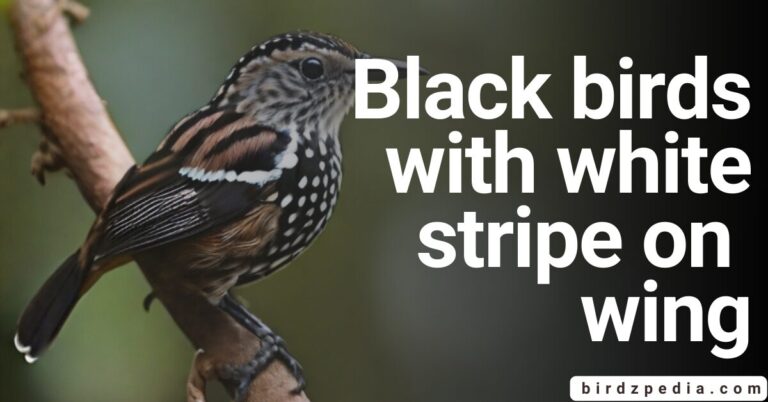Desert Birds: Surviving and Thriving in Arid Environments
Introduction
Deserts are often perceived as barren, lifeless places where few organisms can survive. However, these harsh environments are teeming with life, especially in the form of birds. Desert birds are among the most resourceful and resilient creatures on the planet. From the iconic roadrunner of the American Southwest to the elegant sandgrouse of Africa and Asia, these birds have evolved unique adaptations that allow them to cope with extreme heat, scarce water, and limited food supplies. In this article, we explore the fascinating world of desert birds—their habitats, adaptations, behaviors, and the roles they play in their ecosystems.
Characteristics of Desert Environments
Before diving into the specifics of desert birds, it’s important to understand the environment they inhabit. Deserts are defined by their low precipitation levels—usually less than 10 inches (25 cm) of rainfall annually. They also experience extreme temperatures, with hot days and cold nights. Vegetation is sparse, which limits food availability for herbivorous and omnivorous birds.
Deserts can be hot like the Sahara or cold like the Gobi. Regardless of temperature, the key challenge in these ecosystems is water scarcity, making survival a challenge for all life forms, including birds.

Unique Adaptations of Desert Birds
To survive such harsh conditions, desert birds have developed remarkable adaptations:
-
Water Conservation: Many desert birds obtain moisture from their food, reducing the need to drink. For example, the sandgrouse can fly long distances to find water and carry it back to its chicks via specialized belly feathers.
-
Efficient Thermoregulation: Birds like the roadrunner have strategies to regulate body temperature. They are active during cooler parts of the day—early morning or late afternoon—and seek shade during peak heat.
-
Feather Adaptations: Desert birds often have lighter-colored plumage to reflect sunlight. Some, like the burrowing owl, dig or occupy underground burrows to escape the sun’s intensity.
-
Diet Flexibility: Many are omnivorous and opportunistic feeders, eating everything from insects to seeds and small vertebrates, which increases their chances of survival.
Notable Desert Bird Species
1. Greater Roadrunner (Geococcyx californianus)
A symbol of the American Southwest, the roadrunner is known for its speed and ground-dwelling habits. It feeds on insects, lizards, snakes, and small mammals. With its long legs and tail, this bird is built for running—reaching speeds up to 20 mph (32 km/h). Roadrunners are also known to sunbathe with their backs to the sun, using dark feathers to absorb heat in the chilly mornings.
2. Burrowing Owl (Athene cunicularia)
This small, long-legged owl lives in open desert plains and grasslands. It nests in burrows dug by other animals like prairie dogs. The burrowing owl is active during the day and night and feeds on insects, small mammals, and reptiles. Its ability to live underground helps it avoid extreme temperatures and predators.
3. Sandgrouse (Family: Pteroclidae)
Native to Africa and Asia, sandgrouse are perhaps the most water-efficient birds in desert ecosystems. Males fly to water sources daily and absorb water in their belly feathers, which is then transported back to the nest for chicks to drink—a rare behavior among birds.
4. Cactus Wren (Campylorhynchus brunneicapillus)
This bird is the state bird of Arizona and thrives in arid environments filled with cacti and scrub. It builds large, dome-shaped nests in cholla or prickly pear cacti. Cactus wrens feed on insects, fruits, and seeds, and their loud, raspy call is a common desert sound.
5. Phainopepla (Phainopepla nitens)
A striking black bird (male) with a crest and red eyes, the phainopepla inhabits desert scrublands in the southwestern U.S. and Mexico. It is known for its love of mistletoe berries and will defend berry-rich territories from other birds.
6. Verdin (Auriparus flaviceps)
The verdin is a tiny desert songbird with a yellow head and gray body, found in the southwestern U.S. and northern Mexico. It constructs intricate nests and feeds on insects and nectar. Despite its small size, it is well adapted to hot climates.
Behavior and Breeding Patterns
Desert birds often synchronize their breeding cycles with the availability of food and water. For example, many species breed during or just after the rainy season when insect populations boom. Nesting behavior also reflects adaptation to the environment—many choose shaded or concealed spots to protect their eggs and chicks from the sun and predators.
Additionally, some desert birds are migratory, taking advantage of seasonal changes and moving to more hospitable environments when needed. Others, like the roadrunner or cactus wren, are year-round residents.

Threats and Conservation
Despite their resilience, desert birds face growing threats:
-
Climate Change: Rising temperatures and prolonged droughts are shrinking viable habitats.
-
Urbanization: Expansion of cities and towns into desert regions destroys or fragments natural habitats.
-
Invasive Species: Non-native plants and animals can disrupt food chains and nesting grounds.
Conservation efforts include habitat restoration, protection of critical nesting areas, and public education about the importance of preserving desert ecosystems. Organizations like the Audubon Society and the World Wildlife Fund actively monitor desert bird populations and advocate for sustainable land use.
Role in the Ecosystem
Desert birds play vital roles in their environments:
-
Pest Control: Insectivorous birds keep insect populations in check.
-
Seed Dispersal: Frugivorous birds spread seeds across wide areas, aiding in plant propagation.
-
Pollination: Some birds, like the verdin, contribute to pollination while feeding on nectar.
Their presence indicates the overall health of the desert ecosystem. A decline in bird populations can signal broader environmental issues.
Final Thoughts
Desert birds are extraordinary examples of nature’s ingenuity. Their ability to endure and flourish under the toughest of circumstances is not only inspiring but crucial to the ecological balance of desert environments. By understanding and protecting these remarkable creatures, we ensure that the desert continues to be a place full of life and wonder—not a barren expanse, but a vibrant, resilient ecosystem rich with avian diversity.
Whether you’re a birdwatcher, a nature enthusiast, or simply curious about life in arid climates, the story of desert birds is one of adaptation, survival, and the incredible diversity of life on Earth.
FAQs on Desert Birds: Surviving and Thriving in Arid Environments
Q1: What are desert birds?
Desert birds are species that have adapted to live in hot, dry environments with limited water and vegetation, such as roadrunners, sandgrouse, and cactus wrens.
Q2: How do desert birds survive without much water?
Many desert birds get moisture from their food, reduce water loss through efficient respiration, and some, like sandgrouse, carry water in specialized feathers.

Q3: When are desert birds most active?
They are typically active during the cooler parts of the day—early morning and late afternoon—to avoid extreme midday heat.
Q4: What do desert birds eat?
Their diets vary and may include insects, seeds, fruits, small reptiles, and even other birds, depending on the species and availability.
Q5: Why are desert birds important?
They play key ecological roles by controlling pests, dispersing seeds, and pollinating plants, helping maintain the desert ecosystem’s balance.
Q6: What type of bird lives in the desert?





![Little pied cormorant[Microcarbo melanoleucos]: Fascinating Details](https://birdzpedia.com/wp-content/uploads/2024/01/Little-pied-cormorant-768x402.jpg)
![Embracing Wildlife keel-billed Toucan:[Ramphastos sulfuratus]](https://birdzpedia.com/wp-content/uploads/2024/01/Keel-Billed-Toucan-768x402.png)
